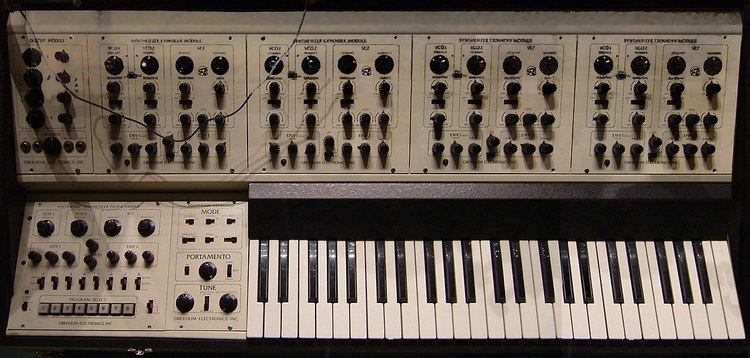Manufacturer Oberheim Polyphony 4 voice LFO 1 with triangle wave | Dates 1975–79 Timbrality Monotimbral | |
 | ||
Oscillator 2 VCOs per voice with sawtooth or variable-pulse waveforms | ||
The Oberheim polyphonic is an analog music synthesizer that was produced from 1975 to 1979 by Oberheim Electronics. It was developed by Tom Oberheim, and was the first production synthesizer capable of playing chords.
Specification
Oberheim took the idea and electronics of a Minimoog synthesizer and put them in a small box, making a few changes, and produced his SEM (synthesizer expansion module), the building block of his polyphonic synths. By strapping two, four, or eight of these SEMs together under keyboard control, he was able to create practical, albeit large, synthesizers that could play two, four, or eight notes simultaneously. Thus the Oberheim polyphonic was born. Each SEM in an Oberheim polyphonic defines one voice (or note) being played in a chord. In addition to multiple voices, on an Oberheim polyphonic you could save settings for sounds you created with a preset programmer (four and eight voice models) and you could glide from one note or chord to another using portamento.
The Oberheim polyphonic was later outdated by a new line of Oberheim synthesizers and Sequential Circuits synths that used more integrated circuits and also some digital embedded microprocessor control; these were less heavy and much smaller than the Oberheim polyphonic. Despite their maintenance cost and rarity, Oberheim polyphonic synthesizers are still adored by many musicians today for their unparalleled sonic 'thickness' and 'depth' caused in part by the random variance between each SEM module.
